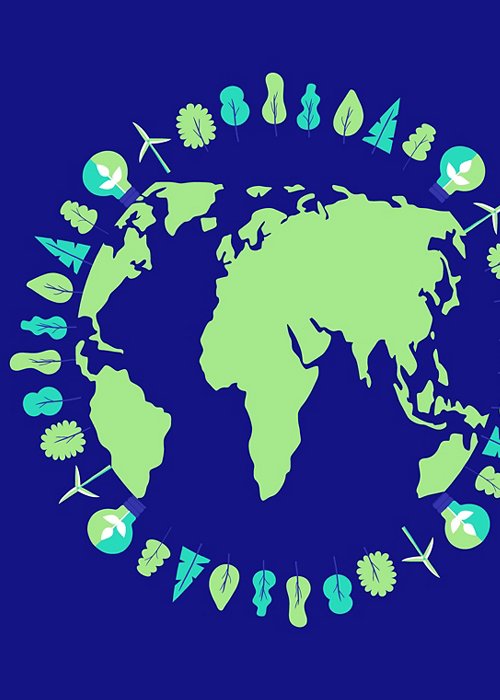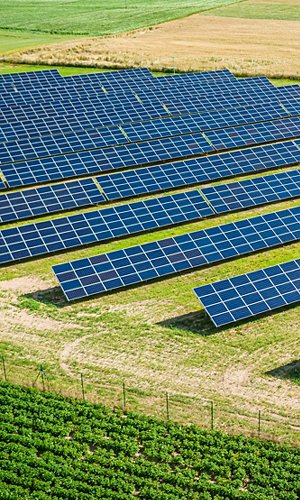On Saturday afternoon in Glasgow, representatives of more than 200 countries attending the COP26 United Nations climate change conference reached a final agreement on shared commitments and strategies to combat global warming. The conference was supposed to end on Friday but, as has happened several times in past years, discussions continued beyond the calendar deadline. Until the very end, there was great uncertainty regarding the final document, and in order to reach an agreement with the consent of all the participating countries, some passages had to be attenuated and the text amended several times. What are the main points of the Glasgow Climate Pact? Let’s look at them below.
1.5°C target
The most concrete step in the agreement concerns the decision to limit the increase in average global temperatures to below 1.5°C compared to pre-industrial levels, 2°C as Plan B. Compared to the Paris Agreement of 2015, the outlook has thus been reversed: in that case, 2°C was mentioned as the real target, 1.5°C as the optimum. In order to achieve this goal, significant reductions in global greenhouse gas emissions must be secured, with zero emissions by 2050. Reducing the use of fossil fuels and, in particular, coal, the most polluting fuel, has been the subject of much debate, and the decision arrived at in the agreement has probably been the one that received the most criticism. As the days went by, there was a shift from the idea of phasing out the use of coal and funding for fossil fuels to a decision to phase down its use. The resulting document therefore calls for ‘accelerating efforts towards a phase-down of unabated coal power’ and gradually ‘phasing out’ inefficient fossil fuel subsidies, while providing targeted support to the poorest and most vulnerable countries, in line with national contributions, and recognising ‘the need for support towards a just transition’. Although this point did not satisfy many countries and several environmental groups, it must be remembered that it is the first agreement of its kind in which a plan to reduce the use of coal is explicitly stated.
News on NDCs
Individual countries then discussed their Nationally Determined Contributions (NDCs) for carbon neutrality, i.e. the commitments made by individual countries to achieve a state where they emit as many greenhouse gases as they remove from the atmosphere. Countries signing the agreement are requested to “revisit and strengthen” their 2030 emission reduction targets by the end of 2022, “taking into account different national circumstances”. States also undertook to review these agreements annually, rather than every five years, which quickly made them obsolete. Rich countries are also asked to “at least double” funding to support adaptation in developing countries by 2025, as compared to 2019 levels.
Agreement on deforestation
Another major change is the agreement on halting and reversing forest loss, signed by 134 countries. The endorsing countries are home to 85% of the world’s forests, and among them, in addition to the world’s largest economies such as the United States and China, are countries such as Brazil, Russia, Indonesia and the Democratic Republic of Congo, which are home to some of the world’s largest forests. Italy is also among the endorsers. With this agreement, it is hoped that forest loss will be halted by 2030, using the $19.2 billion provided by the conference. There is a lot of scepticism about this agreement because, despite its good intentions, it is not binding and does not provide for sanctions for those who do not comply with it.
Other agreements
Another agreement, signed by 108 countries, calls for a 30% reduction in methane emissions by 2030. Countries that have endorsed it include the United States and the European Union, but some major methane producers, such as China, India and Russia, have not. Another agreement signed by 22 countries stipulates that, between 2035 and 2040, all new cars sold will be electric. However, the main car manufacturers, like Germany, Japan, the United States and China, have not signed it.
What didn’t work at Cop26
Not all the objectives sought at Cop26 were achieved. Participating nations have been stalling, effectively postponing agreement on economic aid for the least developed countries to tackle climate change. In the final draft of the document, the richest states are ‘urged’ to double their funding to enable the process of decarbonising the planet. Very many third world or developing countries still need to use one of the most polluting fuels in our system: without economic aid, they will not be able to embark on the path towards renewable energy in a concrete way. The topic was postponed until 2024, without mentioning the $100 billion per year to promote decarbonisation envisaged in the Paris Agreement. Moreover, the document approved at Cop26 does not include one of the requests made by the poorest countries: the fund to offset losses caused by climate change damage in the countries most at risk. Here again, the richer states seem to have turned a deaf ear to the issue, merely envisaging negotiations to establish it.




